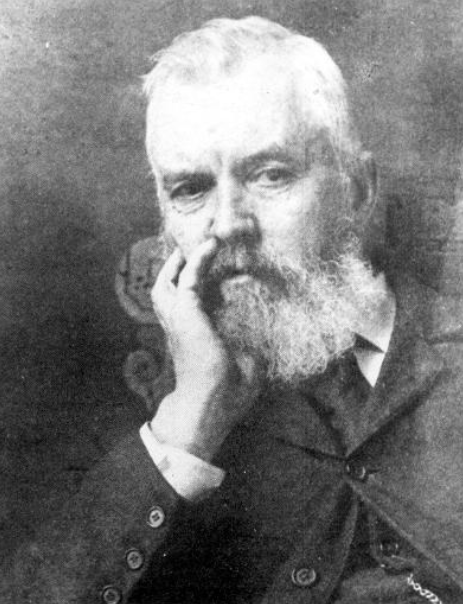Present day Canadian archaeologists are indebted to a pioneering Wellington County teacher, the effect of whose life’s work is still felt today.
David Boyle was born in Greenock, Scotland, in 1843. His father was a blacksmith, a trade young David learned, but his parents were also strong believers in the power of education and knowledge. They passed on to him liberal ideals about democracy, independent thinking, universal suffrage and the rights of working people.
In 1856 the Boyle family emigrated to Canada West (formerly Upper Canada) and settled in Wellington County where they had relatives. David worked as a blacksmith in Eden Mills and Elora but didn’t want to spend his life in a forge. He completed his education and in 1865 secured a position as a teacher in the one-room schoolhouse in Middlebrook, just west of Elora. Boyle was a gifted teacher who applied progressive methods. In 1871 he was made principal of the Elora Public School.
That same year, Boyle was instrumental in reviving Elora’s Mechanic’s Library. He took it from the state of a defunct institution to being the largest library of its kind in Ontario outside Toronto and Hamilton. The rebirth of the library sparked an intellectual renaissance in Elora and allowed Boyle to indulge in his interests in various aspects of the arts and sciences, particularly archaeology.
In 1873, Boyle founded the Elora School Museum. Within 10 years, the museum had one of the best natural history collections in Ontario. Through his efforts to expand those holdings, Boyle enhanced his knowledge of curatorial practices and principles, and gained practical experience in collecting and public relations.
Meanwhile, in 1874 Boyle became one of the founders of the Elora Natural History Society. He generated public interest in science through a program of lectures, field trips and publications. While conducting geological research in the Elora Gorge, Boyle discovered a fossil of a previously unrecorded species of gastropod (a type of snail or slug). University of Toronto palaeontologist Henry A. Nicholson named it Murchisonia boylei in his honour. Boyle’s lecture on the local geology of Elora, published in 1875, was his first recognized work as an author.
Boyle was an inspiration to both young and old as he encouraged intellectual discussion. He wasn’t afraid to address controversial scientific topics in his desire to banish superstition and ignorance. As a member of the North Wellington Teachers’ Association and the Ontario Educational Association he often spoke on the importance of teaching science. He also called for improvements in professional standards, working conditions and benefits for teachers. Later he would publish a thinly-veiled autobiographical novel titled The Ups and Downs of No. 7 which satirized administrators and clerics who had censured him for challenging conventional theological views on science and history.
During the 1870s, Boyle submitted humorous letters to the Elora Lightning Express. Using the pseudonym Sandy McTosher, he wrote in a Scottish dialect. From there he moved up to submitting his funny epistles to New York’s Scottish American Journal under the nom de plume Andrew McSpurtle. The periodical carried his letters for over 30 years.
In 1881 Boyle retired from teaching to write educational material for the Canada Publishing
Company and to contribute to the Canadian Educational Monthly, both of Toronto. Two years later he moved his family to Toronto. He opened Ye Olde Booke Shoppe and Natural Science Exchange on Yonge Street.
The bookshop became a popular centre for Toronto’s intelligentsia, many of whom belonged to the Canadian Institute. Boyle joined the Institute, donated his archaeological collection to it, and became curator of its museum. He began an inventory of archaeological sites across Southern Ontario and solicited donations for the museum. Whenever possible, he went out into the field himself. Through these efforts, Boyle assembled an impressive collection of Indigenous artefacts representative of Ontario.
So far, all of Boyle’s archaeological work was voluntary. Beginning in 1888, he was paid a modest salary from a fund established by the provincial government. That made him Canada’s first professional archaeologist. At about the same time, he sold the bookstore and used the proceeds to pay for his children’s education. His son John was studying to be a pharmacist, while his daughter Susanna had enrolled in medical school – unusual at that time for a young woman but indicative of her father’s liberal views.
Boyle was the foremost archaeologist in Ontario at that time. He was instrumental in promoting archaeology as a science and not something to be undertaken only by amateurs and armchair enthusiasts. He published the Annual Archaeological Report, the first periodical of its kind in Canada. He undertook more fieldwork than had ever been done before in Ontario. By modern standards his techniques for excavation and interpretation seem rudimentary, but they ranked with that of the best of his contemporary colleagues in North America. American archaeologists and museums sometimes called on Boyle as a consultant. Some of his writings were published by the Smithsonian Institute’s Bureau of American Ethnology.
Over the years that followed, Boyle had more accomplishments and honours. Among them: appointment as superintendent of the Ontario Provincial Museum, appointment as first secretary of the Ontario Historical Society, co-founder of the Canadian Folklore Society, appointment to the standing committee of the British Association for the Advancement of Science in Toronto, honorary membership in the Mohawk Nation of the Six Nations Reserve in Ontario, publication of a paper in the Journal of the Anthropological Institute of Great Britain and Ireland, and recipient of the Cornplanter Medal for Iroquois Research awarded by the Cayuga County Historical Society in New York State.
Throughout all this activity, Boyle found the time to write a book of verse for children called Uncle Jim’s Canadian Nursery Rhymes. It was illustrated by the famous Canadian artist C. W. Jeffries.
David Boyle died in Toronto in 1911. The teacher from Elora had certainly made his mark.



